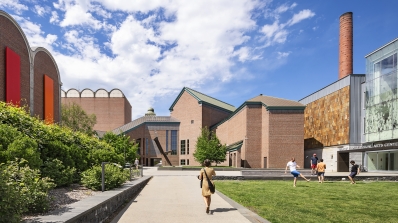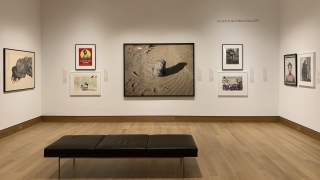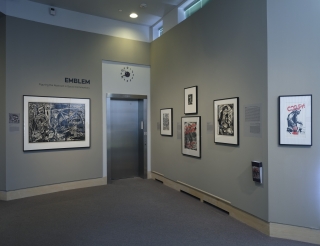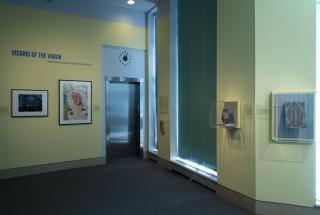Exhibitions Archive
Migrant Bodies and Latinx Identities
Los MojadosLos Mojados: Migrant Bodies and Latinx Identities highlights prints and photographs from the Hood’s collection that speak to the complexity of the US-Latinx experience. Ranging from migrant labor rights issues in the 1960s to the current Central American refugee crisis, these works explore an array of cross-cultural issues though an exploration of the body and accessible media. This exhibition seeks to insert Latinx art and culture into the greater historical narrative of the United States while encouraging viewers to rethink the boundaries of American art.
Emblem, type, symbol, token, trope, image, sign—all of these words describe specific visual forms that represent abstract ideas through recognized shapes, colors, and figures. Many emblems contain culturally specific messages, often taken from sacred or ancient texts, the meanings of which evolve over time. Since these images are quickly legible to members of a shared culture, artists mobilize emblems to provoke certain reactions in an audience. This exhibition draws together various types of emblematic prints—primarily woodcuts—that address social problems and issues.
Manifestations of Mary and Personal Devotion
Visions of the Virgin
This installation investigates the Virgin as a trope and looks at some of the ways in which artists manipulate her to evoke personal piety in both religious and secular contexts that transcend particular cultures. It includes four works--a painting on steel, a photograph, a terracotta jar, and a color lithograph--all created in the twentieth century by artists from the Americas. Produced in different cultures and at different times, these objects present distinctive iterations and interpretations of the Virgin Mary as an object of art and devotion.
José Clemente Orozco and Jackson Pollock
Men of Fire
In 1936, Jackson Pollock traveled to Dartmouth College to view José Clemente Orozco's monumental fresco The Epic of American Civilization (1932-34). The deep impact that Orozco's imagery had on the young Pollock is demonstrated in this revelatory exhibition, which brings together for the first time the drawings and paintings of two of the most famous artists of the twentieth century.
Molas from Kuna Yala
Dressing Up Culture
Colorful, playful, and visually enticing, the appliquéd molas that Kuna women sew onto their blouses yield an astounding array of traditional and contemporary themes. These stitched cloth panels feature abstract and figurative motifs derived from Kuna legends and culture, political posters, labels, books, the natural world, mass media and popular culture, cartoons, and everyday life. Having initially developed from pre-Hispanic body arts, mola making in Kuna Yala, an archipelago that runs along the Caribbean coast of Panama, has become an important women’s economic enterprise that also preserves Kuna cultural and ethnic identity.
Globalization in Ancient Costa Rican Arts
Explore the rich artistic legacy of the ancient Costa Ricans in this exhibition of vessels and figures that helps us trace relationships between the peoples of Costa Rica and their neighbors north and south. In ancient Costa Rican cultures, these objects were used to teach about mythology, religion, and the environment. Today, they help archaeologists reconstruct ancient paths of trade and distribution, revealing that thousands of years ago Costa Rica was, in effect, already regionally "globalized." The exhibition is guest curated by Fred Lange, and archaeologist of Central American cultures.




